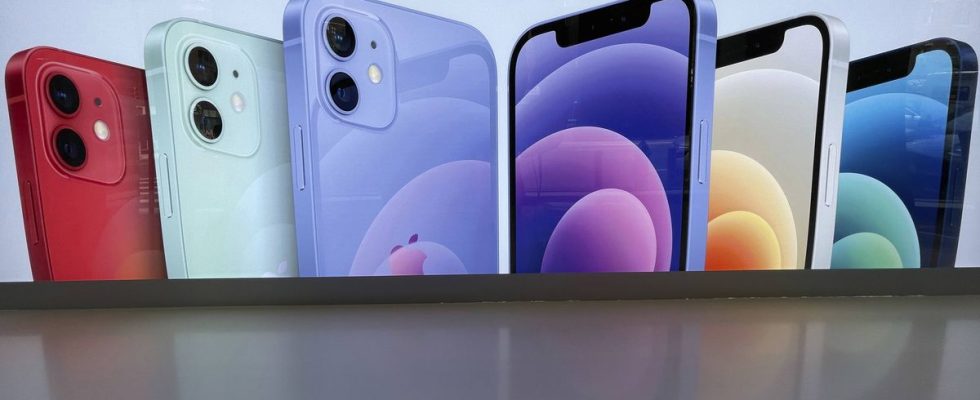Tuesday September 12, the National Frequency Agency (ANFR) published a statement announcing the withdrawal of the iPhone 12 from the French market. This organization, responsible for ensuring compliance with regulatory values for public exposure to electromagnetic waves, has in fact measured emissions higher than European standards on Apple’s smartphone.
More specifically, the agency noted that the specific absorption rate (SAR) limit was exceeded. THE DAS is an indicator which makes it possible to calculate “the energy transported by the waves and absorbed by the human body”, details the ANFR in its press release.
During the evaluation of the ANFR, two values were observed: the “limb” SAR, that is to say for the telephone held in one hand or in a pants pocket, and the “trunk” SAR, i.e. a phone in a jacket pocket or backpack. It is the value measured for the “member” SAR that poses a problem, estimated at 5.74 W/kg while the limit is set at 4 W/kg.
What are the risks for human health?
The removal of the iPhone 12 from the market does not mean that users who own it should worry about their health. Indeed, the limits set by European legislation are much lower than those which could represent a risk to the human body.
In Europe, these limits have been set since July 12, 1999 by the Recommendation of the Council of the European Union 1999/519/EC. These restrictions “provide a high level of protection with respect to established health effects that may result from exposure to electromagnetic fields.” Adopted into French legislation via thedecree of October 8, 2003these limit values are based on the recommendations issued by the International Commission on Non-Ionizing Radiation Protection (ICNIRP), a non-governmental organization recognized by the World Health Organization (WHO).
As explained byWHO, the recommended limits come from the results of experiments carried out on animals (prohibited on humans), to which a “safety factor” is applied, of 10 for the limits of professional exposure, and 50 for the limits of exposure for the general population. Concretely, the current limits are therefore “50 times lower than the threshold from which the first behavioral disorders appear in animals”.
More generally, if the WHO admits the fact “that beyond a certain intensity, electromagnetic fields are likely to trigger certain biological effects”, it is clear on the fact that “nothing indicates for the moment that exposure to low-intensity electromagnetic fields is dangerous to human health.” And this “despite much research”.
Why is the iPhone 12 only being retired now?
The iPhone 12 has been on the market since October 2020. How then can we explain that its non-compliance with limitations in terms of electromagnetic waves is only being noticed today? In reality, official authorities do not carry out checks when the devices are put into circulation on the European market. It is the manufacturers who must prove the conformity of their devices by compiling a technical file including SAR measurements, before submitting this file for marketing.
As it is explained in the r file2021 results of surveillance checks of the mobile phone market of the ANFR: “Member States retain the possibility of verifying a posteriori that these obligations are fulfilled. In France, it is the National Frequency Agency (ANFR) which is responsible for verifications relating to radio frequencies.
It is therefore in this context that the ANFR recently controlled the SAR of the iPhone 12, at the same time as that of 140 other phones. Note that it is only the iPhone 12, and not its versions (iPhone 12 Pro and Pro Max or iPhone 12 mini) which are affected by this withdrawal.
The American firm also contested the ANFR’s decision, ensuring “to have provided the ANFR with results from independent laboratories which ‘prove’ the conformity of this device”, as reported by our colleagues from Parisian.

